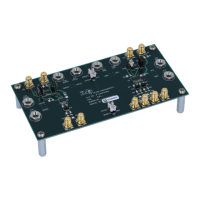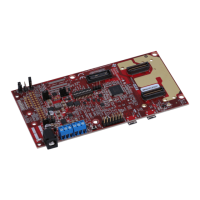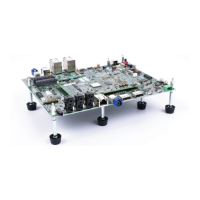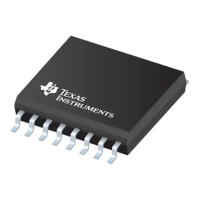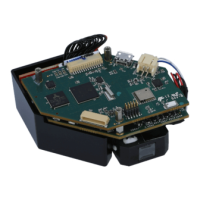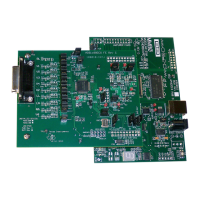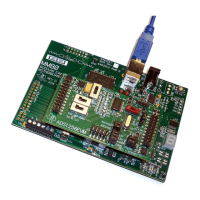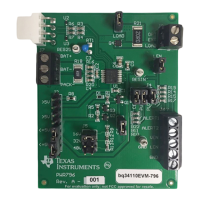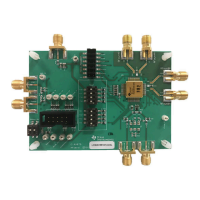• Up to 100,000 program/erase cycles on the lower 32kB of the flash memory, with up to 10,000 program/erase
cycles on the remaining flash memory (devices with 32kB support 100,000 cycles on the entire flash memory)
For a complete description of the flash memory, see the NVM chapter of the technical reference manual.
8.9 SRAM
MSPM0Gxx MCUs include a low power, high performance SRAM memory with zero wait state access across the
supported CPU frequency range of the device. MSPM0Gxx MCUs also provides up to 32KB of ECC protected
SRAM with hardware parity. SRAM memory may be used for storing volatile information such as the call stack,
heap, global data, and code. The SRAM memory content is fully retained in run, sleep, stop, and standby
operating modes and is lost in shutdown mode. A write protection mechanism is provided to allow the application
to prevent unintended modifications to the SRAM memory. Write protection is useful when placing executable
code into SRAM as it provides a level of protection against unintentional overwrites of code by either the CPU
or DMA. Placing code in SRAM can improve performance of critical loops by enabling zero wait state operation
and lower power consumption. Please note that if the DMA controller is to be configured for DMA transfers which
access the SRAM, the ECC protected SRAM address region must not be used by the DMA or the CPU. In cases
where the DMA must access SRAM, configure the DMA and CPU to use only the parity checked SRAM address
region or the unchecked SRAM address region
8.10 GPIO
The general purpose input/output (GPIO) peripheral provides the user with a means to write data out and read
data in to and from the device pins. Through the use of the Port A and Port B GPIO peripherals, these devices
support up to 60 GPIO pins.
The key features of the GPIO module include:
• 0 wait state MMR access from CPU
• Set/Clear/Toggle multiple bits without the need of a read-modify-write construct in software
• GPIOs with "Standard with Wake" drive functionality able to wake the device from SHUTDOWN mode
• "FastWake" feature enables low-power wakeup from STOP and STANDBY modes for any GPIO port
• User controlled input filtering
For more details, see the GPIO chapter of the MSPM0 G-Series 80-MHz Microcontrollers Technical Reference
Manual.
8.11 IOMUX
The IOMUX peripheral enables IO pad configuration and controls digital data flow to and from the device pins.
The key features of the IOMUX include:
• IO Pad configuration registers allow for programmable drive strength, speed, pullup-down, and more
• Digital pin muxing allows for multiple peripheral signals to be routed to the same IO pad
• Pin functions and capabilities are user-configured using the PINCM register
For more details, see the IOMUX chapter of the MSPM0 G-Series 80-MHz Microcontrollers Technical Reference
Manual.
8.12 ADC
Both 12-bit analog-to-digital converter (ADC) modules in these devices, ADC0 and ADC1, support fast 12-bit
conversions with single-ended inputs and simultaneous sampling operation.
ADC features include:
• 12-bit output resolution at 4Msps with greater than 11 ENOB
• HW averaging enables 14-bit effective resolution at 250ksps
• Up to 17 total external input channels with individual result storage registers
• Internal channels for temperature sensing, supply monitoring, and analog signal chain (interconnection with
OPA, DAC, etc.)
• Software selectable reference:
– Configurable internal reference voltage of 1.4V and 2.5V (requires decoupling capacitor on VREF+/- pins)
– MCU supply voltage (VDD)
www.ti.com
MSPM0G3507, MSPM0G3506, MSPM0G3505
SLASEX6A – FEBRUARY 2023 – REVISED JUNE 2023
Copyright © 2023 Texas Instruments Incorporated
Submit Document Feedback
61
Product Folder Links: MSPM0G3507 MSPM0G3506 MSPM0G3505

